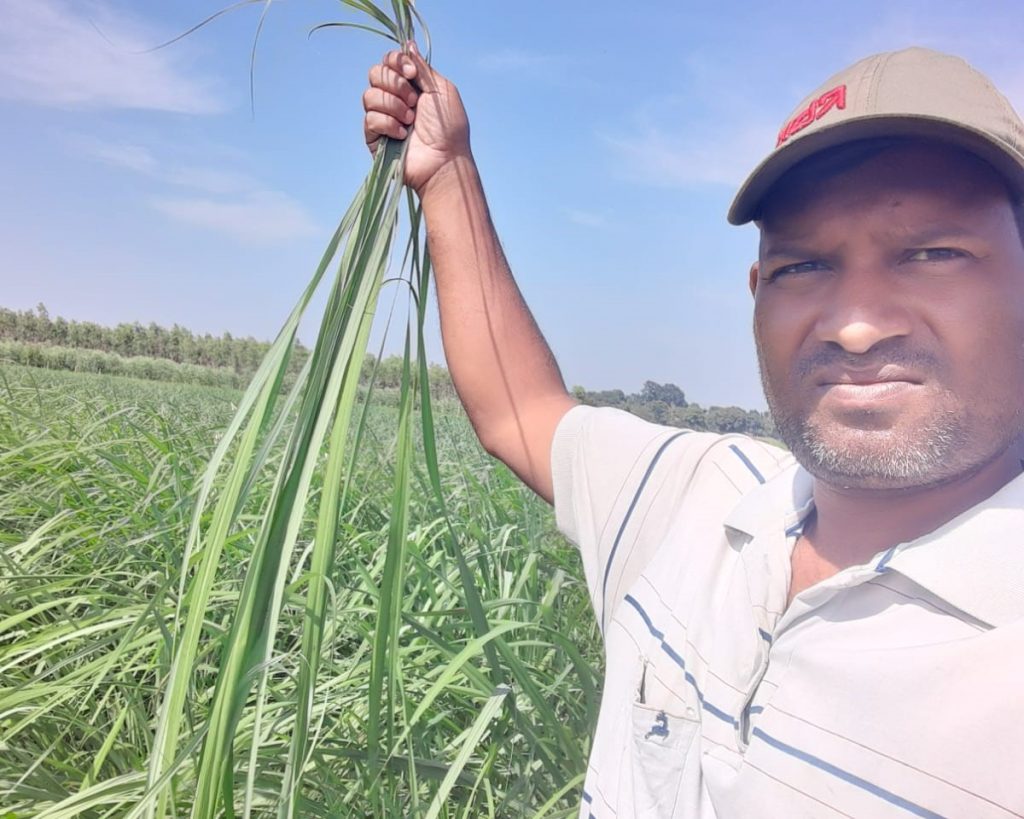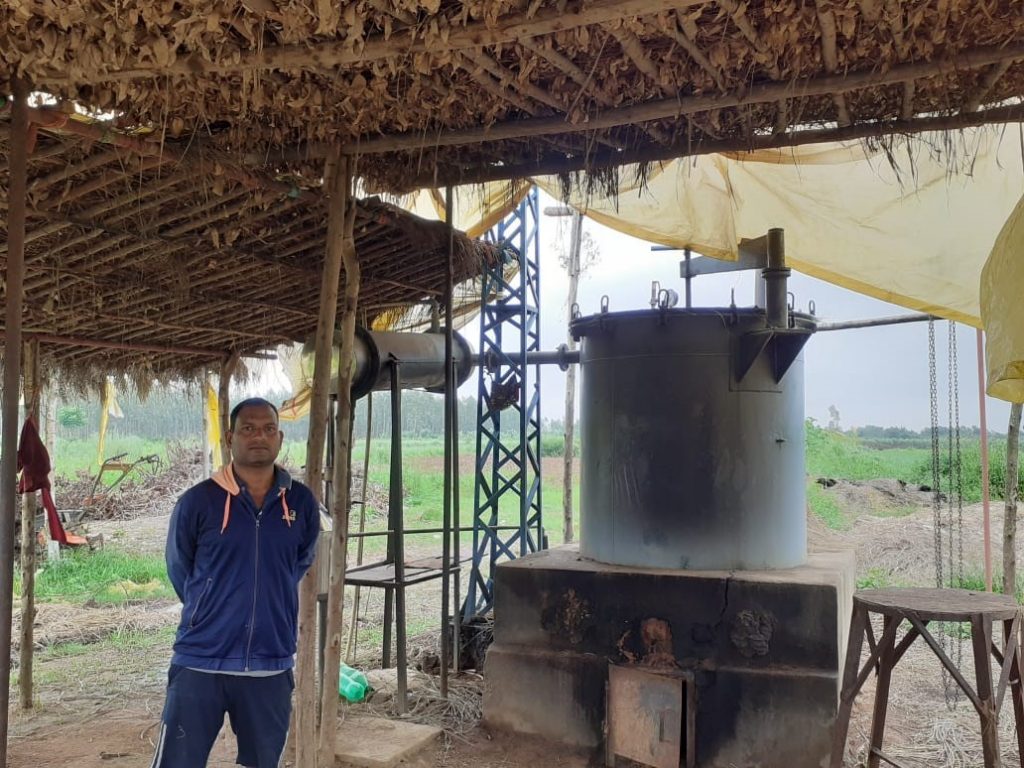Bhubaneswar
Gond tribal Tekchand Nayak in village Raighar of Nabarangpur district, Odisha, was an accountant in the Raighar branch of the State Bank of India till 2022. While he developed severe spondylitis pain owing to his work that required sitting for hours at a stretch, his heart too wasn’t into the job. After all, the entrepreneurship bug had already bitten him.
So, after much consideration, he resolved to go on his own and plunged headlong into growing lemongrass, citronella and eucalyptus that he had flagged off in 2019 in about five acres of land in a stray manner.
In between, he squeezed time out of his job’s busy schedule to undergo a weeklong training at Lucknow-based Central Institute of Aromatic and Medicinal Plant (CIAMP) in 2020.
Cut to 2024, Tekchand has turned into a full-fledged agri entrepreneur. He now grows lemongrass in nearly 30 acres, citronella in some three acres and eucalyptus in about 40 acres. He has set up his own distillation plant on a one-decimal plot in his native village at a cost of about Rs. 7 lakh to extract oil out of them and sell it to over 20 traders mostly of neighbouring Andhra Pradesh and Chhattisgarh.
He procured 2.5 lakh lemongrass saplings for 10 acres and 40,000 citronella saplings for two acres from CIAMP freely. But he had to buy 40,000 eucalyptus seedlings from paper mills in Nabarangpur at Rs. 7 each to grow them in seven acres. The paper mills uses eucalyptus in their production.
“Now I grow them in 73 acres taken on lease for five years by paying Rs. 20,000 annually per acre,” said Tekchand. “I never took any loan to expand my area of farming. I invested my savings and the money that I got from the bank after my resignation. My two elder brothers, fitters by profession, also chipped in with their contributions,” he said.
Oil extracted out of citronella, lemongrass and eucalyptus leaves are in high demand, as cosmetic, pharmaceutical and detergent industries need them for their production. “By-products like pain balm, mosquito repellent, massage oil, phenyl, room freshener and several others are prepared out of these three types of aromatic oil,” said Dr. Prashant Kumar Rout, senior principal scientist of CIAMP.

“While 500 kilograms of lemongrass yields nearly three to four kilograms of oil, five to six grams of oil is extracted out of the same quantity of citronella. Similarly, 500 kilograms of eucalyptus leaves produces three to four kilograms of oil,” the new agri entrepreneur told The Indian Tribal.
Tekchand’s lemongrass produces around three tons of oil per acre, while his citronella yields about two quintals of oil. Similarly, nearly five quintals of oil is extracted out of his eucalyptus yield.
His business in aromatic oil has gone on to clock up an annual turnover of over Rs. 37 lakh. The turnover that accrues out of his business in lemongrass, according to him, amounts to about Rs. 30 lakh while that from eucalyptus and citronella oil stands at about Rs. 5 lakh and Rs, 2 lakh respectively. However, drastic fluctuations in prices of all these three types of oil prove a major retardant for his business.
“If I calculate the average selling price of the oils, I sell lemongrass oil at Rs.1100 per kilogram. On the other hand, I sell eucalyptus oil at Rs1050 per kilogram, while citronella oil sells at Rs. 1300 on an average,” said Tekchand.
“While the per kilogram profit margin from lemongrass oil ranges between Rs 300 and Rs. 400 on average, eucalyptus oil fetches me profit of Rs. 200 to Rs,300 per kilogram. The average profit per kilogram from citronella oil is between Rs. 500 and Rs. 600,” he pointed out.
Tekchand also cultivates paddy in two acres and grows maize in about six acres. Paddy is grown for the consumption of his 15-member family, while he sells maize at about Rs. 22 per kilogram. Paddy is harvested every five to six months a year and maize twice a year. On the other hand, he harvests lemongrass and citronella, and collects eucalyptus four times a year.
He gets a profit of around Rs. 15 per kilogram from the maize of summer, while he derives per kilogram profit of about Rs. 11 from the maize of rains. But annual four-time harvest of lemongrass and citronella along with annual four-time collection of eucalyptus result in bulk sale that fetches him higher income. Besides, once lemongrass and citronella are grown, they are left for at least five years without replantation.
“I harvest 40 to 45 quintals of maize per acre during summer. The per acre maize yield during rains ranges between 20 to 25 quintals. However, I only do business in paddy and maize two times a year, as they are seasonal crops. On the other hand, trading in aromatic oils in bulk is almost a continuous process,” he said.

Grazing animals sometimes play havoc in paddy and maize fields, causing immense loss to the farmers. But lemongrass, citronella and eucalyptus are safe from this danger. As a result, their farming assures gain for farmers like Tekchand who now prefers to lay more importance on their farming.
Unlike other farmers of lemongrass and citronella, who leave their lands untilled and unfertilized for five years, Tekchand spends Rs. 10,000 to Rs. 15, 000 every alternate year to till and compost his fields for the luxuriant growth of citronella and lemongrass.
“I have eight regular employees to look after my farming. If I need more workforce, I engage about 15 to 20 daily wagers. Collection of eucalyptus leaves is a cumbersome work, because my men have to climb trees, pluck appropriate leaves and stack them along with the bundles of lemongrass and citronella to be processed at the distillation plant,” said Tekchand.
“I have 50 goats that I rear for meat purpose. Depending upon on their size and growth, the selling price of each goat varies between Rs. 3000 and Rs. 8000. They also help me for the proper growth of citronella and lemongrass, as they graze out the wild grass and unwanted plants in the field,’ he added.
So, has the risk you undertook worth it? “Of, course,” pat came the reply. Now, the tribal agri entrepreneur plans to diversify into making by-products out of the oils. “This is why I often visit CIAMP to undergo training for a week or for a fortnight to update my knowledge,” he said.




















